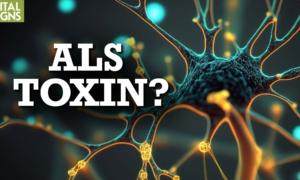A team of scientists from Western University in Canada has potentially discovered a promising avenue for treating amyotrophic lateral sclerosis (ALS), the devastating neurological condition commonly referred to as Lou Gehrig’s disease.
Their study suggests that two proteins might hold the key to preserving the nerve cells ravaged by the condition.
Protein Interaction Reverses Cell Death
By targeting the interaction between two proteins residing in nerve cells affected by ALS, the researchers could potentially stop and reverse the progression of the disease, according to the findings, published in the journal Brain.Nearly all ALS patients have TDP-43, a protein that forms abnormal clumps within cells, leading to cell death in nearly every ALS patient. The research team had previously identified another protein, RGNEF, which counteracts TDP-43’s toxic effects.
In their latest study, they focused on a specific part of RGNEF, called NF242, which mitigates the harmful effects of TDP-43. As a result, when RGNEF and TDP-43 interact, TDP-43 is rendered non-toxic, the damage to nerve cells is significantly reduced, and cell death is prevented.
“This interaction could be key to unlocking a treatment not just for ALS but also for other related neurological conditions, like frontotemporal dementia,” Dr. Strong said. “It is a gamechanger.”
Experiments on fruit flies showed that the interaction between the two proteins extended lifespan, improved motor function, and protected nerve cells from degeneration. Mouse model studies yielded similar results, including enhanced lifespan, mobility, and reduced neuroinflammation biomarkers.
ALS Cases Projected to Surge by 69 Percent
ALS is a rare and terminal neurodegenerative disorder that progressively destroys motor neurons in the brain and spinal cord, leading to muscle atrophy, paralysis, and ultimately, respiratory failure.With an average life expectancy of 2-5 years after diagnosis, the condition primarily affects individuals between 55-75 years old. While the exact cause remains unknown, with most cases—about 90 percent, according to the U.S. Centers for Disease Control and Prevention—occurring without family history, potential factors include environmental exposures to radiation and agricultural chemicals.
Expressing the urgency to find a cure, Dr. Strong emphasized the importance of assuring patients and families that “we’re trying to stop this disease.”






